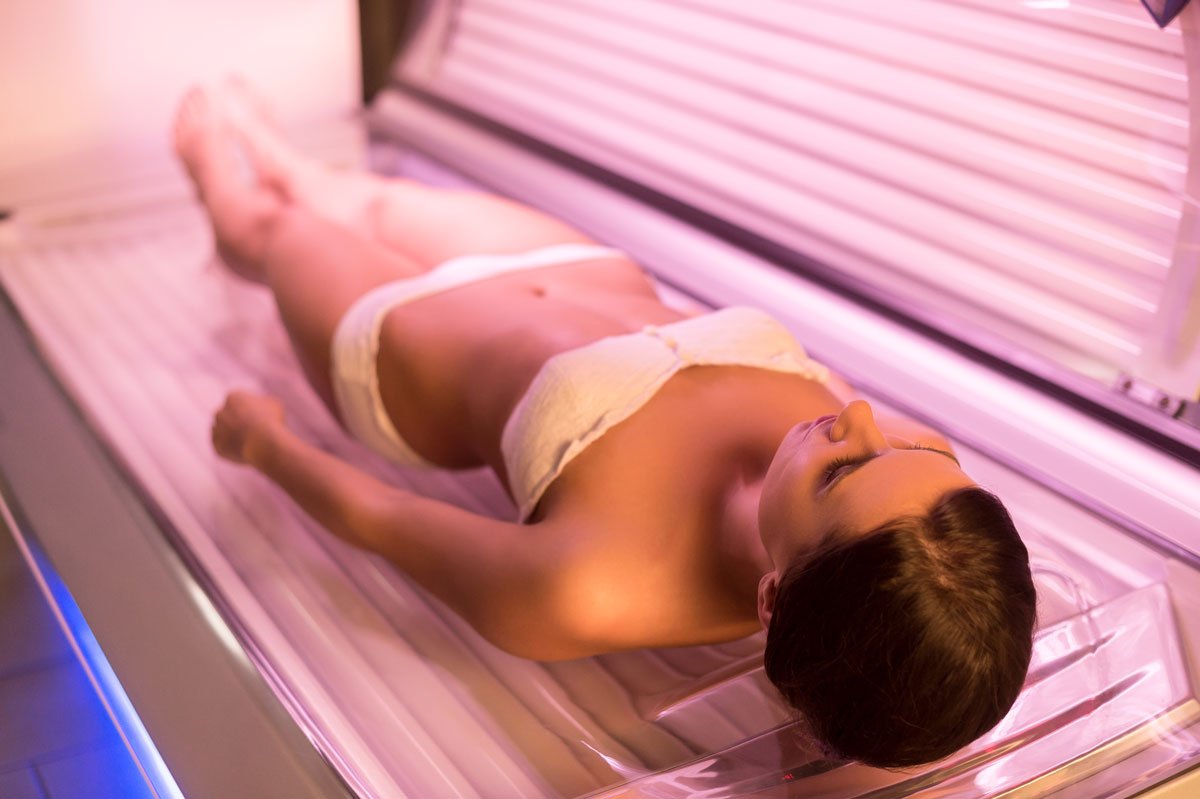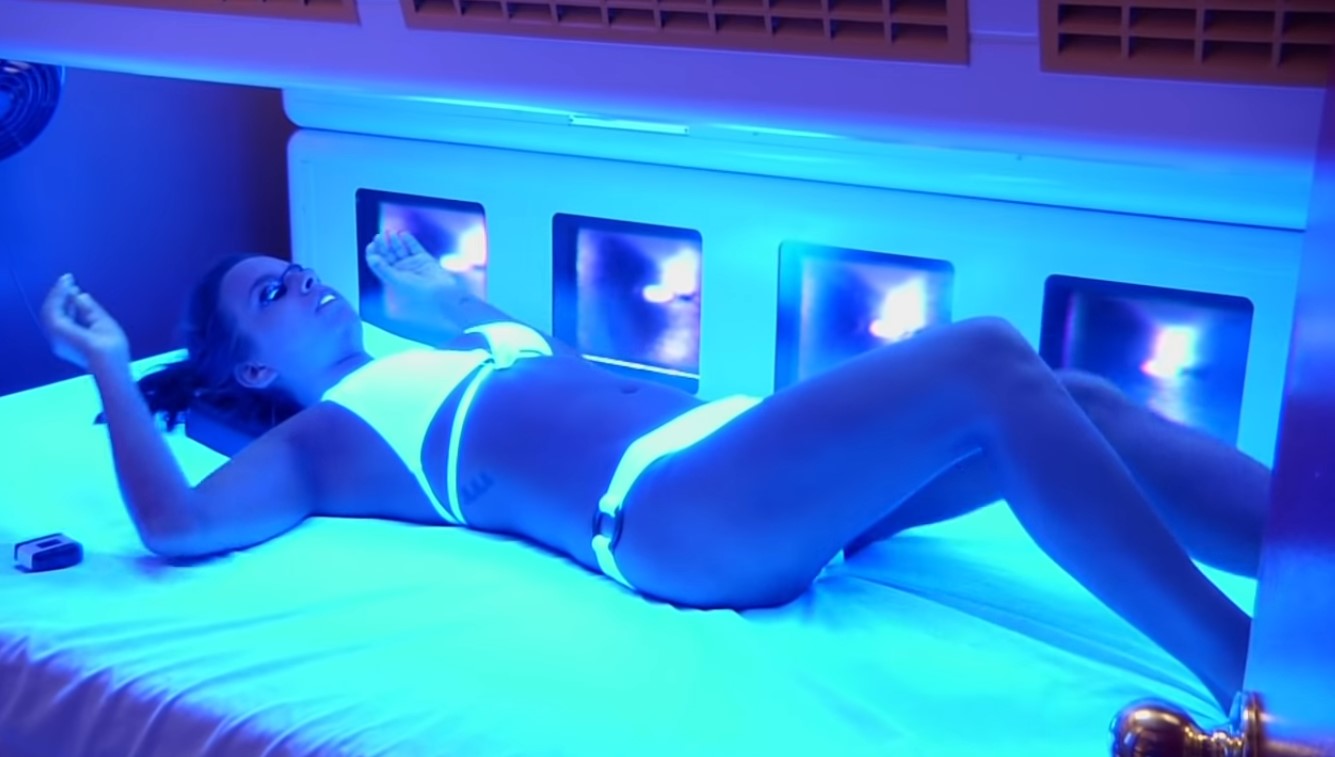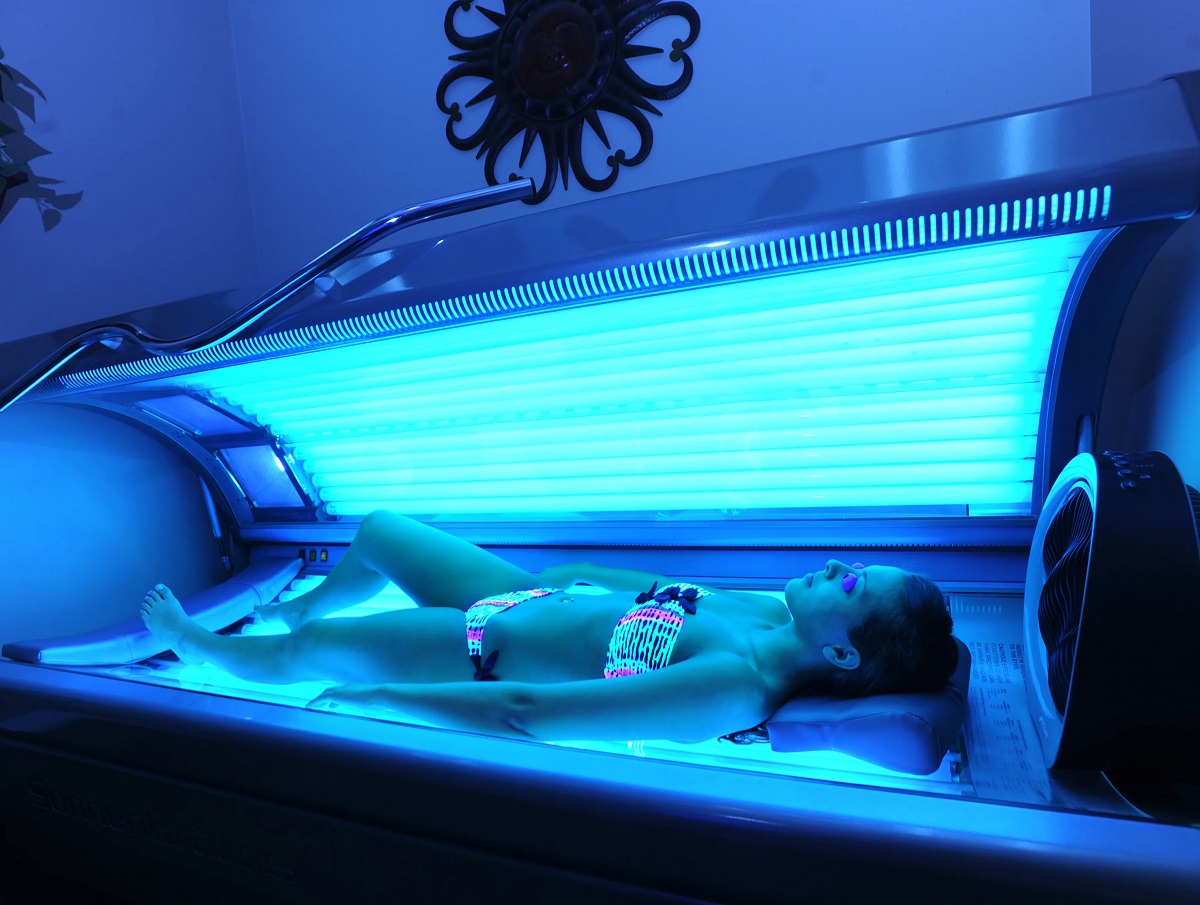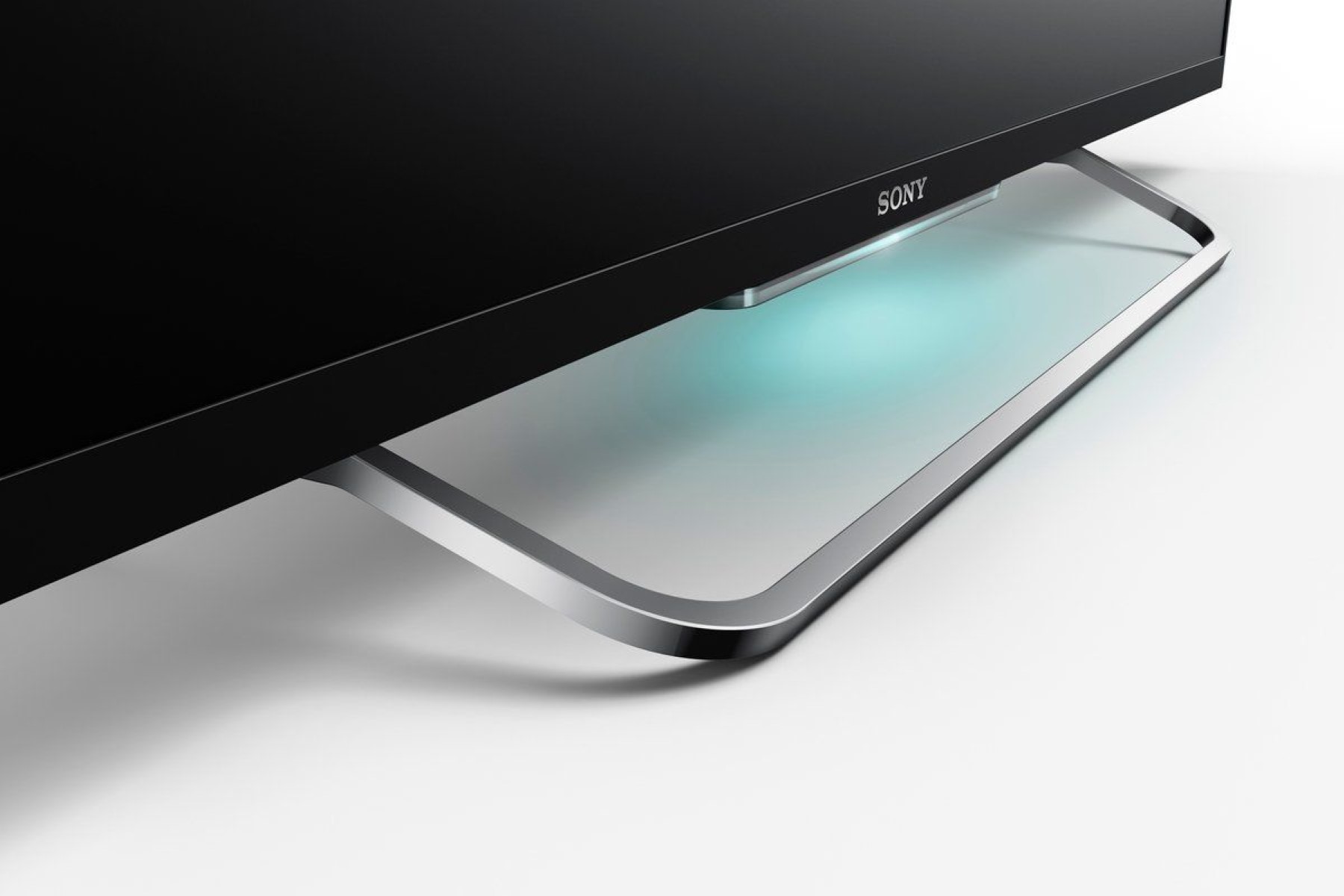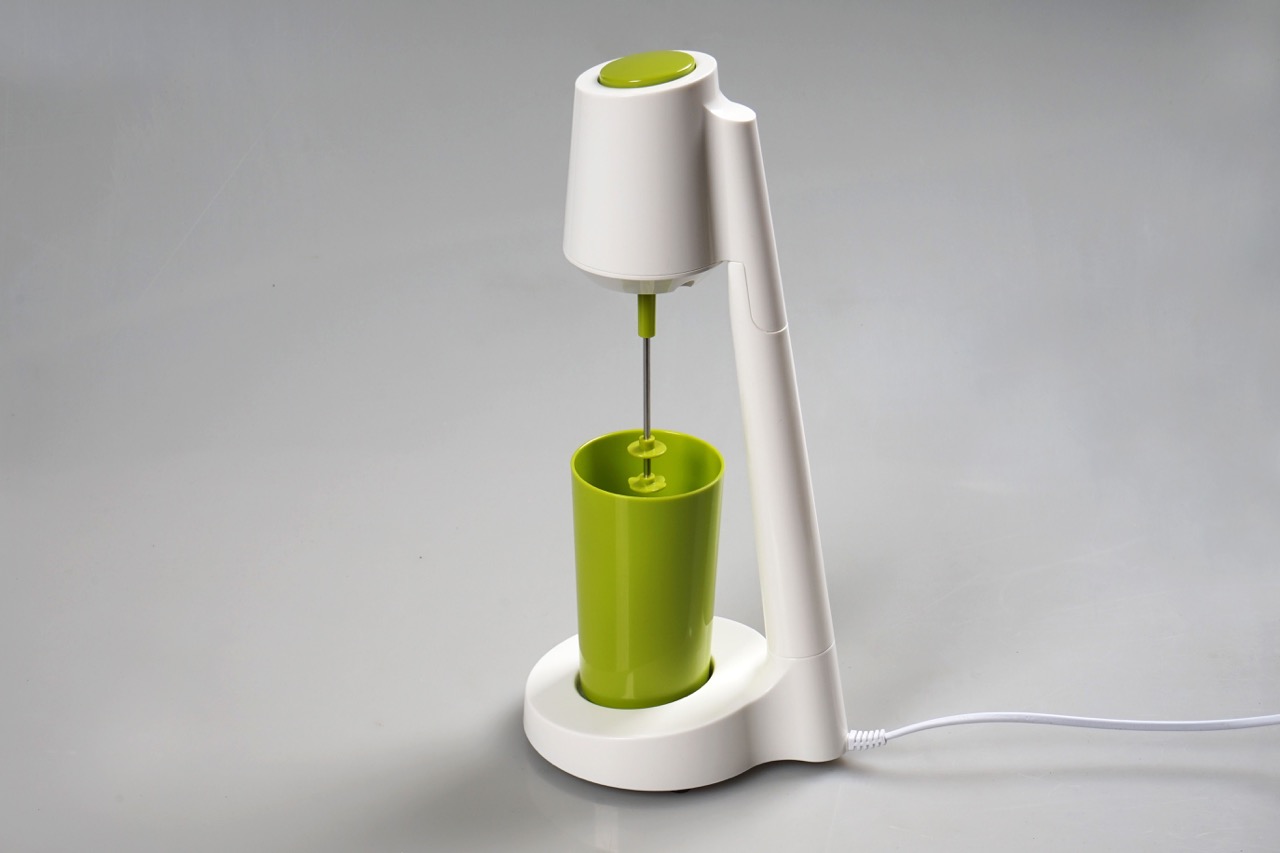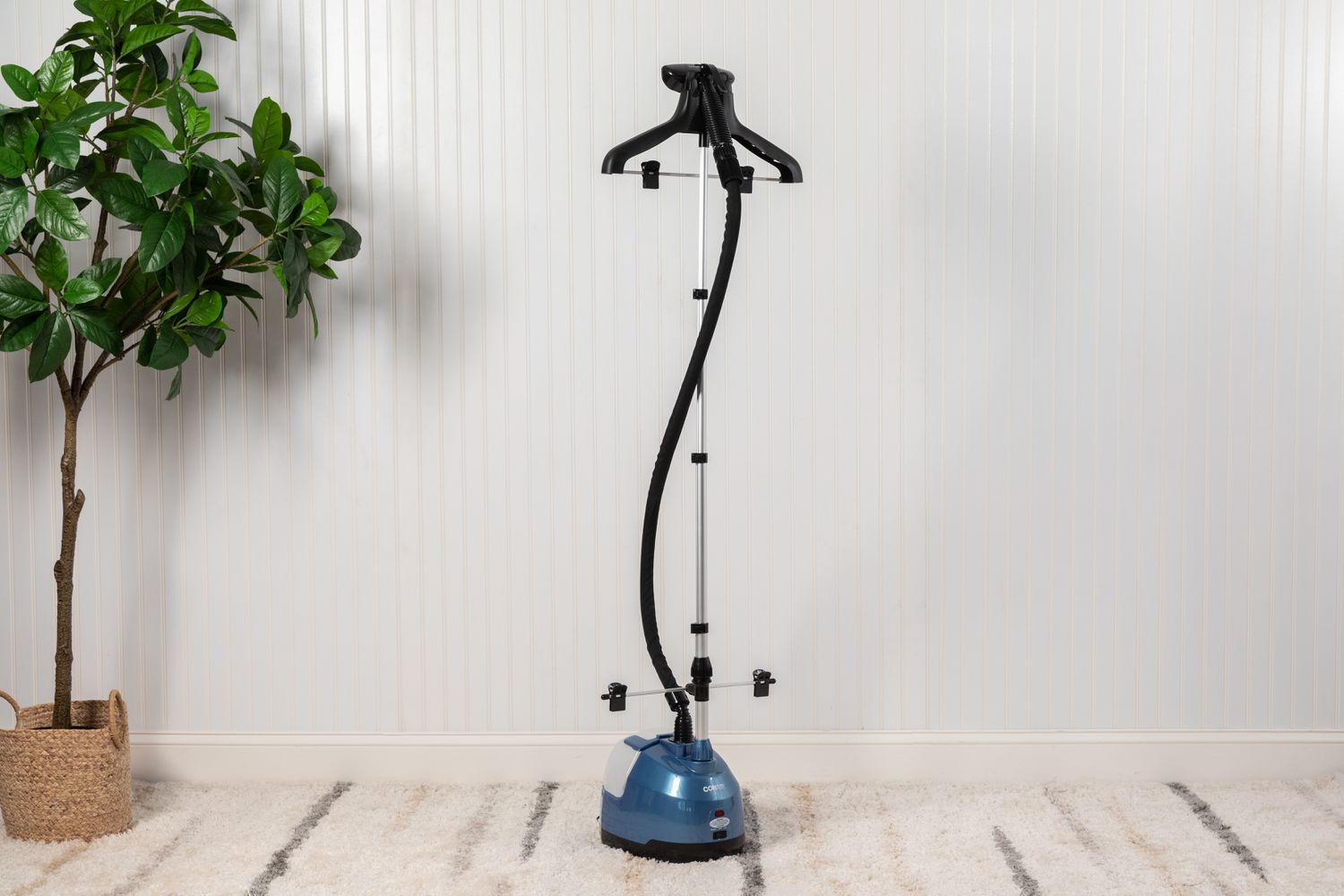Home>Furniture>Bedroom Furniture>How To Use A Stand-Up Tanning Bed


Bedroom Furniture
How To Use A Stand-Up Tanning Bed
Modified: February 18, 2024
Discover the best way to use a stand-up tanning bed for a perfect sun-kissed glow. Transform your bedroom into a stylish haven with our range of high-quality bedroom furniture.
(Many of the links in this article redirect to a specific reviewed product. Your purchase of these products through affiliate links helps to generate commission for Storables.com, at no extra cost. Learn more)
Introduction
Welcome to the world of stand-up tanning beds! If you’re looking to achieve that perfect, sun-kissed glow without spending hours lying down, stand-up tanning beds can be a convenient and effective option. In this article, we will explore everything you need to know about using a stand-up tanning bed to ensure a safe and successful tanning experience.
Stand-up tanning beds, also known as vertical tanning booths, differ from traditional horizontal beds in that you stand upright instead of lying down. This design allows for a more even tan, as the UV rays hit all sides of your body evenly. Whether you’re a seasoned tanner or a first-timer, understanding the ins and outs of stand-up tanning beds is essential for maximizing your results and minimizing any potential risks.
Before diving into the details, it’s important to note that while tanning can provide a healthy dose of vitamin D and a golden complexion, overexposure to UV rays can have adverse effects. It’s crucial to practice moderation and protect your skin during the tanning process.
So, if you’re ready to learn how to make the most out of your stand-up tanning experience, let’s get started!
Key Takeaways:
- Achieve a safe and even tan with stand-up tanning beds by adjusting settings based on your skin type, following proper aftercare, and prioritizing safety measures. Enjoy the process responsibly for a healthy glow.
- Elevate your tanning experience with stand-up tanning beds by preparing your skin, using tanning lotions, and varying your stance for an even tan. Prioritize skin health and consult professionals for personalized guidance.
Read more: How To Tan In A Tanning Bed
Understanding Stand-Up Tanning Beds
Stand-up tanning beds offer a unique and efficient way to achieve a tan. These vertical tanning booths consist of a chamber with multiple UV lamps strategically placed to evenly distribute UV rays. Understanding the components and features of stand-up tanning beds is crucial for a successful tanning experience.
One of the key advantages of stand-up tanning beds is their ability to provide an even tan. Unlike traditional horizontal beds where pressure points and body contours can cause uneven tan lines, stand-up beds ensure that all sides of your body are exposed to the UV rays equally. This means no more awkward positions or repositioning during your tanning session.
Most stand-up tanning beds feature a control panel that allows you to adjust the settings according to your preferences. You can set the duration of the tanning session, the intensity of the UV lamps, and sometimes even choose specific tanning programs tailored to your skin type. This versatility allows for a personalized tanning experience that caters to the needs of different individuals.
Another important factor to consider is the ventilation system in stand-up tanning beds. Due to the upright position, it’s common for users to experience a build-up of heat and perspiration during their tanning session. A well-designed ventilation system helps to regulate the temperature, ensuring a comfortable and pleasant experience.
When it comes to the type of lamps used in stand-up tanning beds, most models utilize high-pressure bulbs. These bulbs emit a mix of UVA and UVB rays, ensuring a balanced tan. UVA rays are responsible for the immediate bronzing effect, while UVB rays stimulate the production of melanin, which leads to a longer-lasting tan. The combination of both types of rays offers a natural-looking and darker tan.
Additionally, stand-up tanning beds may also incorporate additional features such as built-in sound systems or cooling fans to enhance your overall tanning experience. These extra features can make your tanning sessions more enjoyable and help pass the time as you bask in the warm glow.
Now that you have a better understanding of stand-up tanning beds, including their design, features, and advantages, you are well-equipped to embark on your tanning journey. The next step is to prepare yourself for a successful tanning session, and we will cover that in the next section.
Preparing for Your Tanning Session
Before stepping into a stand-up tanning bed, it’s important to properly prepare your skin to achieve the best possible results. Taking a few simple steps beforehand can ensure that your tanning session is effective and safe.
The first step in preparing for your tanning session is to exfoliate your skin. Use a gentle scrub or exfoliating glove to remove any dead skin cells. This will create a smooth surface for the UV rays to penetrate and result in a more even tan. Pay extra attention to rough areas like elbows, knees, and heels. Avoid using oil-based scrubs or lotions, as they can create a barrier on your skin and reduce the effectiveness of the tanning process.
Next, make sure your skin is clean and free of any lotions, oils, or cosmetics. These substances can create a barrier on your skin and interfere with the tanning process. Take a shower before your session and avoid using any moisturizers or makeup. If you have sensitive skin, it’s a good idea to apply a small amount of hypoallergenic lotion to prevent dryness.
It’s essential to protect your eyes during a tanning session. Most stand-up tanning beds provide you with goggles to shield your eyes from the UV rays. Make sure to wear them throughout the entire session to avoid potential damage to your eyes. If you wear contact lenses, it’s best to remove them before your tanning session to prevent any discomfort or dryness.
Choosing what to wear during your tanning session is also important. Opt for minimal clothing to maximize exposure to the UV rays. Many tanners choose to wear disposable underwear or opt to go nude for an all-over tan. However, if you prefer to wear your own undergarments, make sure they are made of a material that allows the UV rays to penetrate through, such as cotton.
Lastly, it’s crucial to monitor the timing and frequency of your tanning sessions. Start with shorter sessions to avoid overexposure to UV rays. Gradually increase the duration as your skin becomes accustomed to the process. It’s generally recommended to wait at least 48 hours between each tanning session to allow your skin time to recover and maintain its health.
By following these preparation steps, you’ll ensure that your skin is ready for a successful tanning session. In the next section, we’ll explore how to operate a stand-up tanning bed to make the most out of your tanning experience.
Operating the Stand-Up Tanning Bed
Operating a stand-up tanning bed is a straightforward process, but it’s important to familiarize yourself with the controls and settings to ensure a safe and effective tanning session. Here’s a step-by-step guide on how to operate a stand-up tanning bed:
- Start by adjusting the height of the tanning bed. Most stand-up beds have adjustable platforms that allow you to find the most comfortable position. Ensure that your body is positioned correctly, with the UV lamps evenly distributed around you.
- Put on the goggles provided by the tanning salon to protect your eyes from the UV rays. Make sure they fit securely and cover your eyes completely.
- Once you’re positioned and wearing your goggles, it’s time to set the controls. Depending on the model of the tanning bed, you’ll typically find a control panel or touch screen with various options.
- Set the duration of your tanning session. Start with a shorter duration, such as 5-8 minutes, if you’re new to tanning or have fair skin. As you build a tolerance, gradually increase the time, but be cautious not to exceed the recommended guidelines for your skin type.
- Adjust the intensity of the UV lamps. Most tanning beds offer different intensity levels that allow you to customize your tan. If you have fair or sensitive skin, start with a lower intensity and gradually increase it as your skin becomes accustomed to the UV exposure.
- Some tanning beds may have additional features like cooling fans or music systems. Use these features to enhance your comfort and make the tanning experience more enjoyable.
- Press the start button or follow the instructions provided to begin your tanning session. Once the session starts, remain in place and avoid movement to ensure an even tan.
- During the tanning session, it’s important to relax and breathe normally. Some tanning beds emit a gentle hum or fan noise, which is normal and part of the experience.
- As the session nears its end, most tanning beds will provide a warning or audible signal. Once the session is complete, step out of the tanning bed and remove your goggles.
It’s worth mentioning that these steps may vary slightly depending on the specific make and model of the stand-up tanning bed you’re using. If you’re unsure about any aspect of the operation, don’t hesitate to ask the salon staff for assistance.
Now that you know how to operate a stand-up tanning bed, let’s move on to the next section, where we’ll discuss how to adjust the settings based on your skin type and preferences.
Adjusting the Settings for Your Skin Type
Adjusting the settings of a stand-up tanning bed is crucial to ensure that your tanning experience is tailored to your specific skin type. By customizing the intensity and duration of your tanning session, you can achieve a safe and effective tan. Here are some guidelines for adjusting the settings based on your skin type:
Fair Skin: If you have fair or sensitive skin, it’s important to start with lower intensity and shorter durations. Begin with a low to medium intensity setting and limit your tanning sessions to around 5-8 minutes. Gradually increase the time and intensity as your skin becomes more accustomed to the UV exposure.
Medium Skin: Those with medium skin tones can typically tolerate slightly higher intensity levels and longer tanning sessions. Start with a medium to high intensity setting and gradually increase the duration, aiming for sessions of around 8-12 minutes. Pay attention to any signs of skin sensitivity or redness and adjust the settings accordingly.
Olive or Dark Skin: Individuals with darker skin tones can withstand higher intensity levels and longer tanning sessions. Begin with a medium to high intensity setting and aim for sessions of 12-15 minutes. Always monitor your skin for any adverse reactions and adjust the settings as needed.
It’s important to note that these guidelines are general recommendations and may vary depending on individual skin sensitivity and the specific equipment used. If you’re unsure about the optimal settings for your skin type, consult with a knowledgeable professional at the tanning salon.
In addition to adjusting the intensity and duration, some stand-up tanning beds offer pre-programmed settings tailored to different skin types. These settings may adjust the UV output and duration automatically, taking the guesswork out of finding the perfect settings for your skin. If your tanning bed offers these presets, consider using them as a starting point and further personalize your settings based on your skin’s response.
Regularly monitoring your skin’s reaction to tanning sessions is crucial. If you notice any signs of irritation, sensitivity, or overexposure, it’s essential to reduce the intensity or duration for future sessions. Over time, you will become more familiar with your skin’s tolerance and be able to adjust the settings accordingly to maintain a healthy and glowing tan.
Now that you know how to adjust the settings for your skin type, let’s move on to the next section, where we’ll cover important safety measures and precautions to take during your tanning sessions.
Read more: How To Use A Tanning Bed Safely
Safety Measures and Precautions to Take
While stand-up tanning beds can help you achieve a beautiful tan, it’s essential to prioritize your safety during the tanning process. Taking a few precautionary measures can help minimize the risks associated with UV exposure. Here are some important safety measures and precautions to keep in mind:
Protective Eyewear: Always wear the goggles provided by the tanning salon to protect your eyes from the intense UV rays emitted by the tanning bed. Closing your eyes or wearing sunglasses is not sufficient to shield your delicate eye tissues from potential damage. Make sure the goggles fit securely and cover your eyes entirely during the entire session.
Moderation: Avoid overexposure to UV rays by following the recommended guidelines for your skin type. Start with shorter sessions and gradually increase the duration as your skin becomes accustomed to the process. It’s essential to give your skin time to recover between tanning sessions to maintain its health.
Sunscreen: Applying sunscreen is still important, even when using a stand-up tanning bed. While the UV rays in a tanning bed are different from direct sunlight, protecting your skin with an SPF of 15 or higher can further minimize the risk of sunburn and premature aging. Apply sunscreen to any areas that are not covered by clothing, such as your face and neck.
Hydration: Tanning bed sessions, especially longer ones, can cause your body to perspire and lose moisture. Stay hydrated by drinking plenty of water before and after your tanning session. This helps keep your skin hydrated and promotes overall well-being.
Skin Sensitivity: Monitor your skin’s reaction during and after tanning sessions. If you experience any unusual or severe reactions, such as itching, redness, or blisters, discontinue tanning and consult a healthcare professional. Some medications, skincare products, or medical conditions can increase skin sensitivity to UV rays. It’s important to inform the salon staff of any relevant medical history or current medication you may be taking.
Trained Professionals: Choose a reputable tanning salon with knowledgeable staff who can guide you through the process and ensure your safety. They should be able to answer any questions you have and provide guidance on proper tanning techniques and equipment usage.
Pregnancy: If you’re pregnant or trying to conceive, it’s highly recommended to avoid tanning bed sessions. The effects of UV radiation on a developing fetus are not well understood, and it’s best to err on the side of caution to protect both you and your baby’s health.
By following these safety measures and precautions, you can enjoy your tanning sessions with peace of mind and reduce the risk of any adverse effects. Now that we’ve covered the safety aspects, let’s move on to the next section, where we’ll discuss essential aftercare and ways to maintain your tan.
Aftercare and Maintaining Your Tan
After your tanning session, it’s important to provide proper aftercare to maintain your tan and keep your skin healthy. Follow these essential aftercare tips to extend the longevity of your tan:
Moisturize: Hydrating your skin is crucial to maintain a healthy and long-lasting tan. Apply a moisturizer after each tanning session to keep your skin hydrated and prevent dryness. Look for a moisturizer that is specifically formulated for tanned skin and free from oils and fragrances that may interfere with your color.
Avoid Excessive Showering and Sweating: In the hours following your tanning session, it’s best to avoid excessive sweating and showering. This allows the tan to fully develop and penetrate your skin. If you do need to shower, use lukewarm water and avoid scrubbing your skin vigorously.
Avoid Exfoliating: Refrain from exfoliating your skin for at least 24 hours after a tanning session. Exfoliation can remove the dead skin cells that hold the tan, causing it to fade more quickly. Instead, opt for gentle cleansing and moisturizing to maintain the tan for as long as possible.
Protect Your Skin: Just like with natural sun tanning, it’s important to protect your skin from excessive UV exposure even after your tanning session. Wear sunscreen with a sufficient SPF when you’re out in the sun to prevent burning and premature aging. This is especially important if you’re planning to spend extended periods outdoors.
Maintain Regular Sessions: To maintain your tan, consider incorporating regular stand-up tanning bed sessions into your routine. The frequency will vary depending on your desired level of tan and skin type. Consult with a tanning professional to determine the optimal tanning schedule for your specific needs.
Avoid Over-Tanning: While a tan can enhance your appearance, it’s crucial not to overdo it. Excessive UV exposure can damage your skin and increase the risk of skin cancer. Practice moderation and always prioritize the health of your skin.
Healthy Lifestyle: A healthy lifestyle can contribute to the longevity of your tan. Eat a balanced diet, stay hydrated, and exercise regularly to promote overall skin health. Your lifestyle choices can affect the quality and duration of your tan.
By following these aftercare tips and maintaining a proper skincare routine, you can extend the life of your tan and keep your skin looking vibrant and glowing. However, it’s important to remember that a tan is always temporary, and regular tanning should be done responsibly and in moderation.
Let’s move on to the next section, where we’ll share some helpful tips and tricks for using stand-up tanning beds to enhance your tanning experience.
Tips and Tricks for Using Stand-Up Tanning Beds
Using stand-up tanning beds can be a simple and enjoyable process, but there are a few tips and tricks that can enhance your overall tanning experience. Here are some helpful suggestions to make the most out of your sessions:
Prepare Your Skin: Prior to your tanning session, exfoliate your skin thoroughly to remove any dead skin cells. This will result in a more even and longer-lasting tan. Avoid applying any oils or lotions before tanning, as they can create a barrier and interfere with the tanning process.
Use a Tanning Lotion: Consider using a tanning lotion specifically designed for use in tanning beds. These lotions can help to moisturize your skin, boost your tan, and prolong its duration. Look for lotions that contain ingredients like tyrosine, which stimulates melanin production, and antioxidants to protect the skin.
Vary Your Stance: While standing in the tanning bed, try varying your stance during the session to ensure an even tan. Move your arms and legs slightly to expose different areas of your body to the UV rays. This will help to achieve a more balanced and natural-looking tan.
Protect Sensitive Areas: Certain areas of your body, like the soles of your feet and the palms of your hands, can be more prone to over tanning. Before entering the tanning bed, apply a thin layer of petroleum jelly or use barrier creams to protect these sensitive areas from excessive exposure.
Relax and Enjoy: Use your tanning session as an opportunity to relax and unwind. Close your eyes, play calming music, or visualize yourself in a tropical paradise. Taking a few moments for yourself can enhance the overall enjoyment of your tanning experience.
Consider a Tanning Schedule: Creating a consistent tanning schedule can help you achieve and maintain your desired tan. Work with a tanning professional to determine an appropriate schedule that takes into account your skin type and desired results. Following a schedule ensures regular exposure to UV rays without overdoing it.
Maintain Your Tan: After each tanning session, moisturize your skin with a product specifically formulated for tanned skin. This helps to keep your skin hydrated and prolong the life of your tan. Avoid excessive exfoliation to prevent premature fading.
Consult a Tanning Professional: If you’re new to using stand-up tanning beds or have specific concerns, don’t hesitate to consult a tanning professional. They can provide guidance on proper techniques, recommend the best products for your skin type, and address any questions or concerns you may have.
Listen to Your Body: Pay attention to how your skin reacts during and after each tanning session. If you experience any discomfort, irritation, or persistent redness, adjust your tanning routine accordingly. Your body will provide valuable feedback, and it’s important to listen and make necessary changes to protect your skin’s health.
By implementing these tips and tricks, you can elevate your stand-up tanning bed experience and achieve optimal results. Remember to always prioritize the health and safety of your skin throughout the process.
In the next section, we’ll address some frequently asked questions about using stand-up tanning beds.
Frequently Asked Questions (FAQs)
Here are some common questions that arise when it comes to using stand-up tanning beds:
Read more: How To Use A Tanning Bed At Planet Fitness
1. Is stand-up tanning safe?
When used responsibly and in moderation, stand-up tanning can be safe. It’s crucial to follow the recommended guidelines for your skin type and take necessary precautions, such as wearing protective eyewear and using sunscreen.
2. How often should I use a stand-up tanning bed?
The frequency of tanning sessions will depend on your skin type and desired results. It’s best to consult with a tanning professional to determine an appropriate schedule. Generally, starting with one to two sessions per week and gradually increasing if desired is a common approach.
3. Can I tan in a stand-up bed if I have sensitive skin?
If you have sensitive skin, it’s important to be cautious when using a stand-up tanning bed. Start with shorter sessions and lower intensity levels, and gradually increase as your skin becomes accustomed. Consult with a professional if you have concerns.
4. Can I tan in a stand-up bed if I have fair skin?
Tanning in a stand-up bed is possible for individuals with fair skin, but it requires careful consideration. Start with low-intensity sessions and shorter durations, and gradually increase as your skin builds a tolerance. Always monitor your skin’s reaction and adjust accordingly.
Read more: What Is A Tanning Bed
5. What should I wear during a stand-up tanning session?
The choice of clothing during a stand-up tanning session is a personal preference. Many individuals opt for minimal clothing or even go nude for a more even tan. However, if you prefer to wear clothing, choose garments made of breathable materials that allow UV rays to penetrate the fabric.
6. Can I tan in a stand-up bed if I’m pregnant?
If you’re pregnant or trying to conceive, it’s recommended to avoid tanning bed sessions. The effects of UV radiation on a developing fetus are not well understood, and it’s best to err on the side of caution to protect both you and your baby’s health.
7. How long does a tan from a stand-up bed last?
The duration of a tan from a stand-up bed varies from person to person. On average, a tan from a tanning bed can last anywhere from one to two weeks. Proper aftercare and maintenance, such as moisturizing and minimizing exfoliation, can help prolong the life of your tan.
8. Can I tan in a stand-up bed if I have a tattoo?
Tanning can affect the color and vibrancy of tattoos, so it’s important to protect your tattoos from excessive UV exposure. Consider using a broad-spectrum sunscreen on your tattoos and covering them with a towel or clothing during a tanning session.
If you have any additional questions or concerns about stand-up tanning beds, it’s always best to consult with a tanning professional or healthcare provider who can provide personalized guidance.
Now that you have a better understanding of stand-up tanning beds, it’s time to embark on your tanning journey armed with knowledge and precautions.
Please note that the information provided in this article is for educational purposes only and should not replace professional advice. Consult with a healthcare professional or tanning specialist regarding your specific situation.
Happy tanning!
Always wear protective eyewear when using a stand-up tanning bed to shield your eyes from UV rays. This will help prevent damage to your vision and reduce the risk of eye irritation.
Read more: How Often Can You Use A Tanning Bed
Conclusion
Using a stand-up tanning bed can be a convenient and effective way to achieve that sun-kissed glow without spending hours lying in a traditional horizontal bed. By understanding the nuances of stand-up tanning beds, preparing your skin properly, and following safety measures, you can enjoy a successful tanning experience.
Remember to adjust the settings of the tanning bed based on your skin type and preferences, utilizing the intensity and duration that work best for you. Take precautions to protect your eyes, moisturize your skin, and avoid overexposure to UV rays. Regularly assess the condition of your skin and adjust your tanning routine accordingly.
Additionally, practicing proper aftercare and maintenance is essential for keeping your tan looking fresh and prolonging its lifespan. Moisturize your skin, avoid excessive exfoliation, and protect your skin from excessive sun exposure.
By implementing the tips and tricks shared in this article and following the recommended guidelines, you can make the most out of your stand-up tanning bed experience. Nevertheless, always prioritize your skin’s health and safety, and consult with professionals if you have any concerns or questions.
Remember, tanning is a personal choice, and it’s essential to engage in responsible tanning practices. Understand your skin’s limitations, be mindful of the risks associated with UV exposure, and practice moderation to maintain a healthy balance.
Now that you’re equipped with the knowledge and confidence to navigate stand-up tanning beds, go ahead and enjoy the process. Whether you’re getting ready for a special occasion or just want to feel a warm glow, embrace the experience, and remember to take care of yourself and your skin.
Disclaimer: The information provided in this article is for educational purposes only and should not be considered as medical or professional advice. Consult with a healthcare professional or licensed tanning specialist for personalized recommendations and guidance.
Happy tanning!
Frequently Asked Questions about How To Use A Stand-Up Tanning Bed
Was this page helpful?
At Storables.com, we guarantee accurate and reliable information. Our content, validated by Expert Board Contributors, is crafted following stringent Editorial Policies. We're committed to providing you with well-researched, expert-backed insights for all your informational needs.
